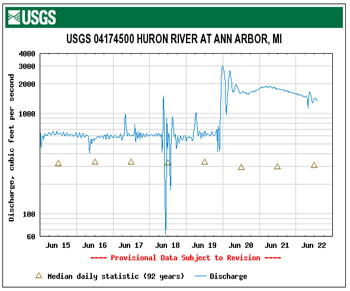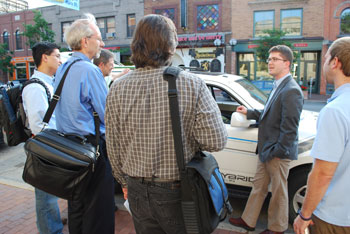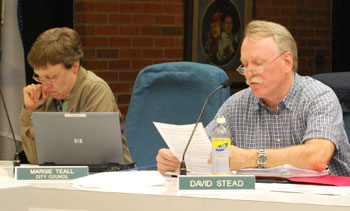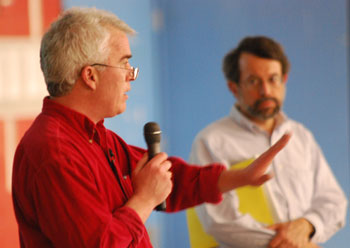MDEQ to Ann Arbor: Close Argo Millrace
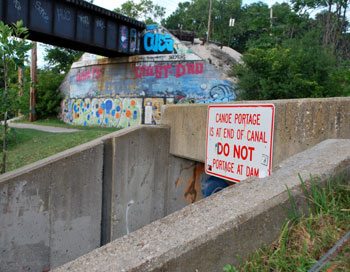
Likely point of closure for the millrace (also known as the headrace or canal) at Argo Dam. (Photo by the writer.)
As part of an intro to an interview with the chair of the Ann Arbor Park Advisory Commission, Scott Rosencrans, which The Chronicle published on Aug. 25, we reported that a letter from the Michigan Department of Environmental Quality had been sent to the city of Ann Arbor. The MDEQ letter included an order to close the millrace at Argo Dam.
The communication from the state agency didn’t come out of the blue – it was a reply to a request sent to MDEQ by the city of Ann Arbor asking for an extension to a July 31, 2009 deadline for action on Argo Dam.
With the text of both letters now available, we take a look at those communications, after briefly considering some historical context. That context dates back to a 2004 letter from the MDEQ about toe drains in the earthen berm next to the dam, and includes formation of a study committee, a public engagement process that extended over most of the first half of this year, recommendations from the city’s Park Advisory Commission and Environmental Commission, and a city council work session.
A key date from the most recent MDEQ letter is Nov. 1, 2009, by which time it has ordered the city of Ann Arbor to close off and drain the millrace. But it leaves both the dam-in and dam-out options available to the city. On a dam-in scenario, the MDEQ wants the toe drains in the earthen berm repaired by Dec. 31, 2010. On a dam-out scenario, the MDEQ wants the removal completed by December 2012. Either way, the city is supposed to have its study of options completed by April 30, 2010.
Based on a Tuesday phone conversation with Matt Naud, the city’s environmental coordinator, one possible timeline for next steps would have the city council conducting a mid-September work session on the topic, with clear direction coming at the council’s second meeting in September. Whatever that direction from council is, said Naud, it’s going to start costing money to implement the next steps – on the order of five-figure dollar amounts at least. [Full Story]




